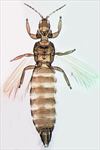
Female

Antennal segments II–IV
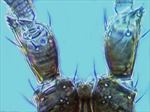
Antennal segment II
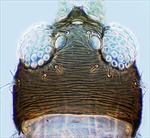
Head
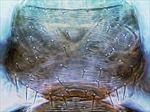
Pronotum
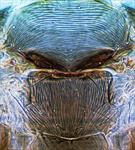
Mesonotum & metanotum

Fore wing

Thoracic sternites

Female sternite VII
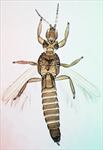
Male
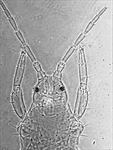
Second instar larva
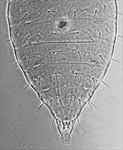
Second instar larva abdomen
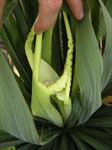
Apical leaves of Yucca distorted by thrips
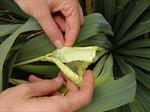
Ankothrips within distorted apical leaves of Yucca
Both sexes fully winged. Body, legs and antennae light brown to brown, antennal segments III–IV paler; fore wings fuscous with base a little paler; male pale brown. Antennae 9-segmented, IX longer than VIII, sensoria transverse on III & IV, segment II apex prolonged ventro-laterally into serrate lobe. Head with ocellar setae I arising on conical, slightly bifurcate tubercle, setae III arise within ocellar triangle. Hear with 3 pairs of prominent postocular setae. Pronotum posterior margin with 5 pairs of prominent setae. Mesonotum with no microtrichia. Metanotum striate medially, with median setae near posterior margin. Abdominal tergite VIII median setae scarcely 0.3 as long as tergite; tergite X with paired trichobothria well developed. Sternite VII posterior margin with pair of lobes each bearing two setae at base.
Male tergite IX without pairs of stout setae medially.
The median setae on tergite VIII of females are shorter than in the other Californian species of Ankothrips, and tergite IX of the males lacks stout discal setae. Currently there are 13 species listed in the genus Ankothrips, seven of which are from western USA with five from California (Bailey, 1957). Of the others, one is from SW Africa, one from Iran, and four from southern or eastern Europe. Although at one time considered members of the Aeolothripidae, all females of Melanthripidae have a pair of lobes at the posterior margin of sternite VII, a condition that is otherwise found only in females of Merothripidae.
Breeding in the flowers of Yucca whipplei [Agavaceae].
Known only from California.
MELANTHRIPIDAE
Ankothrips yuccae Moulton
Ankothrips yuccae Moulton, 1926: 119
Bailey SF (1940) A review of the genus Ankothrips D.L.Crawford (Thysanoptera). Pan-Pacific Entomologist 16: 97–106.
Bailey SF (1957) The thrips of California Part I: Suborder Terebrantia. Bulletin of California Insect Survey 4: 143–220.